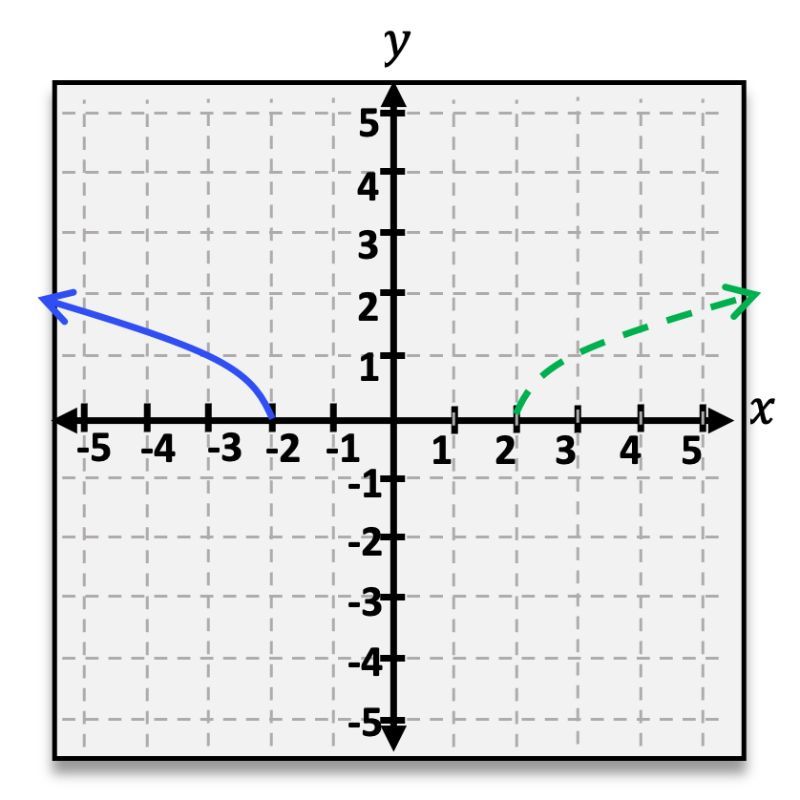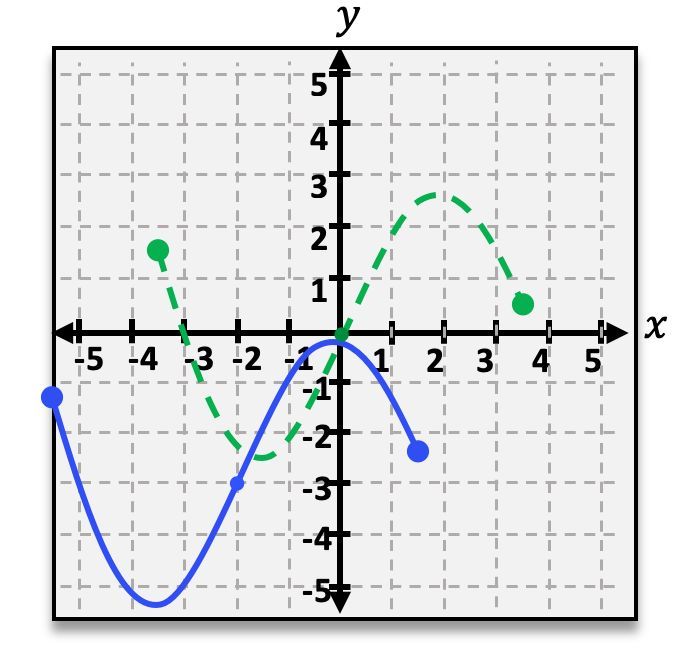Hey, everyone, and welcome back. Up to this point, we've spent a lot of time talking about functions. In this video, we're going to be taking a look at the transformation of functions. This topic can seem a bit complicated at first because there are a lot of different types of transformations that you'll see, but in this video, we're going to learn that transformations really only boil down to 3 basic transformations, which we're going to cover. After taking a look at these, I think you'll find that this concept is a lot less abstract and a lot more clear. So let's get right into this. A transformation occurs when a function is manipulated such that it changes position or shape. There are 3 main examples of transformation: reflections, shifts, and stretches.
For a reflection, this occurs when a function is folded over a certain axis. If we were to take this function that we see here and reflect it over the x-axis, it would look something like this: notice how we literally just took this graph and folded it—that's a reflection. Another type of transformation is a shift. The shift occurs when you move a function. If we were to take this function, which is currently at position zero zero (the origin), and move it to some new location, the graph would look different. Notice how we literally took the function and moved it somewhere else—that's a shift's transformation.
The last transformation we're going to look at is a stretch, which occurs when you imagine squeezing a function together. So if you imagine taking this function and stretching it vertically, it squeezes the function together—that's the idea of a stretch. These are the 3 basic transformations you're going to see throughout this course, and we will cover these in more detail as we go through this series on transformations. It's also important to know how the function notation is going to change in these certain situations.
A reflection is going to become negative when you reflect over the x-axis. We started with f(x), and this became -f(x). A shift is going to turn into this function, f(x-h+k), where h represents the horizontal shift, and k represents the vertical shift.
For a stretch transformation, the function is going to look like this, where you have some constant multiplied by the function f(x): c∙f(x). c is the constant responsible for causing this kind of squeeze on the graph, or basically the vertical stretch.
Now let's see if we can actually apply this knowledge to an example. We're given the function f(x)=|x| and the corresponding graph. We need to match the following functions P of X, Q of X, and R of X to the correct corresponding graph, because all of these functions are transformations of our original function the absolute value of x. For P(x)=|x-3|+2, this looks most like a shift transformation. Thus, graph 2 matches with function A.
For Q(x)=-|x|, this seems like a reflection. Graph 1, which has just been flipped, matches with option B. By elimination, for function C, this matches with graph number 3, but notice we have a negative sign and constant in our function, causing both a vertical stretch and a reflection transformation. So, overall, these are the three functions that match with the three graphs below. That is the basic idea of a transformation of function. Hopefully, you found this helpful. Let me know if you have any questions, and thanks for watching.






